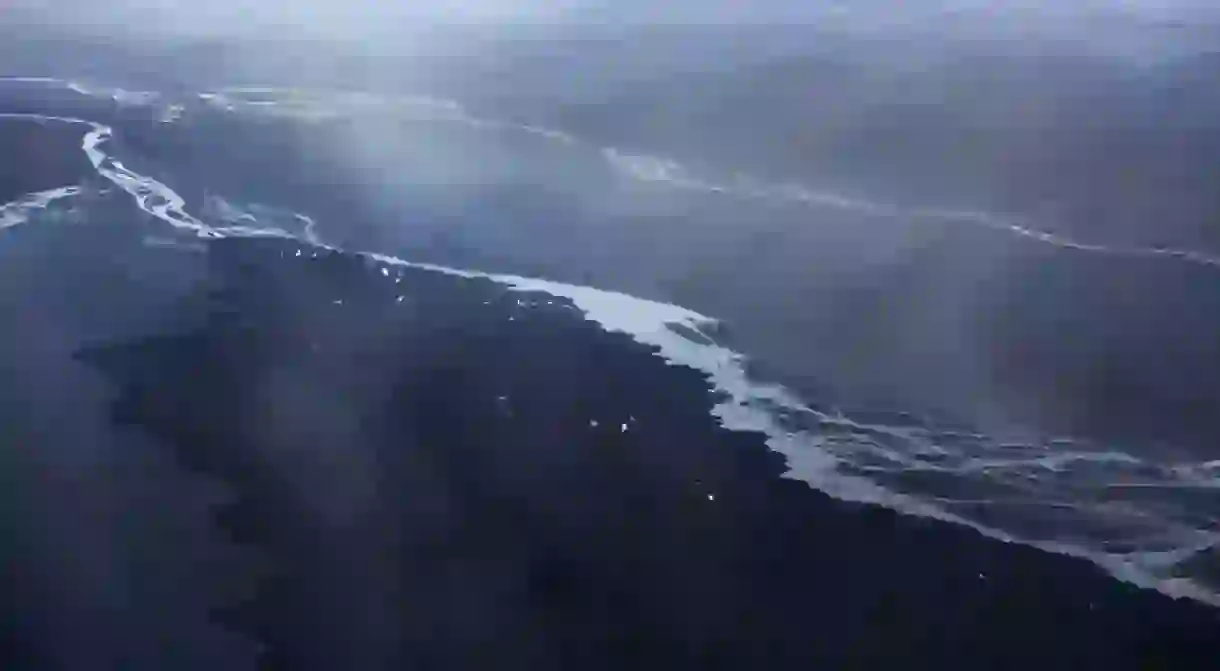Iceland's Breathtaking Landscape in the Eyes of its Artists

While it is an experience in itself to gaze upon a landscape with your own eyes, it can also add another dimension to the landscape’s effect to experience it through the eyes of another. There are many Icelandic artists working in a variety of mediums, from painting to video, sculpture, and photography, who have interpreted the environmental features surrounding them in their artwork.
Sigrún Harðardóttir
Sigrún Harðardóttir is a multimedia artist based in Iceland who often uses video and sound to explore geothermal sites. The Rhythm of Geysers is an interactive audiovisual poem about geothermal activity. Visitors take part in the evolution of the work through the nine floor sensors which control the playback. In their participation, visitors create their own personal experience of the site, composing different layers of sound and vision. You can get a sense of the musical harmonies inherent in the various pitches reached throughout an eruption. The work was last exhibited at The National Gallery of Iceland in 2016 and is now part of the museum collection.


Rúrí
Photographs of waterfalls that have disappeared into a vast water reservoir at the Kárahnjúkar dam in the highlands of Iceland, and of others that have been greatly affected by the damming are presented in this collection of images titled Elimination II by the Icelandic conceptual artist Rúrí. All of the same waterfalls are depicted in the multimedia installation Archive – Endangered Waters which was exhibited at the Icelandic Pavilion when Rúrí represented Iceland at the 2003 Venice Biennale.

Hrafnkell Sigurðsson
Using a variety of mediums such as video, installation, and photography, Hrafnkell’s work examines elements of the relationship between man and nature, playing with ideas of reversal and transcendence through the landscape. His photographic series include images of empty tents in the snow, houses under construction, and mirror images of trash whose front panels open to reveal snowy landscape panoramas.

Ólafur Eliasson
Continuing his oeuvre of photographic series of landscapes from Iceland, the Icelandic/Danish artist uses a grid formation in his largest series of sixty-three photographs presenting a small encyclopedia of Iceland’s major volcanic craters. Volcanoes have always been a significant part of the country’s natural and cultural identity. The artist often uses imagery of Icelandic landscapes to visualize the multiplicity of perception at play between the thresholds in the landscape, as well as the ephemeral, time-based quality of all encounters.

Ragnar Axelsson
Ragnar Axelsson, often shortened to RAX, has been documenting his travels in the Arctic for the past three decades. Working as a photographer for the largest Icelandic newspaper since 1976, his work has become well-regarded both in Iceland and abroad.

Steina Vasulka
Steina Vasulka has been making video art since the late 1960s in New York City and is a pioneer in the video art movement. In the video matrix …Of the North (2001), Steina stacks 15 large video monitors showing dazzling spheres of various computer-generated spheres, each a world unto itself. A continuous acoustic resonance is associated with each sphere’s movement, as you begin to notice environmental forms such as ocean surf, steep canyons, and plants. These monumentally beautiful spheres will move the viewer into a state of active reflection on the harmony of the earth’s surfaces.

Jóhannes Kjarval
Johannes Kjarval (1885-1972) is perhaps the most well-known Icelandic painter. In Fjallamjólk (1941), the white water in the center’s starkness next to the textured earth palette echoes Kjarval’s tendency for things both supernatural and natural to appear in his paintings. This is heightened by the unique perspective, in which traditional increments for land, sea, and sky are shifted so that the distant becomes the close at hand. The landscape becomes the model in the artists’ presence with detail and expression in the minute worlds within the moss and crevices of rock. See more of his work at the museum housing a permanent collection of his work.

Ólöf Nordal
Ólöf Nordal is known for many of her works in public spaces, one of which is Geirfugl (Great Auk) (1998), a life-sized aluminum sculpture of a now distinct Icelandic bird that appears sitting upon a rock in the bay of Skerjafjörður (close to the Domestic airport in Reykjavik). This public sculpture echoes when the very last pair of great auks were hunted for monetary gain in 1844. Nearby, you can see and experience another public work on the tip of the Seltjarnarnes Peninsula in the form of a geothermal footbath titled Kvika. Take off your shoes and sit on the sculpture as you take in the sight of Mount Esja across the bay. While both of these works are not depictions of landscapes, they are taking part in the landscape and coercing another layer of experience with the landscape.

Eggert Pétursson
Eggert Pétursson creates charming paintings of Icelandic flora and fauna. Blanketing the canvas, his minuscule blooms are also vast in their exquisite detail. Pétursson’s depictions are so seemingly real that they become more fantastical than ever with different types of flowers’ visual effect being pulled out by the painter.

Ragna Robertsdóttir
Ragna Robertsdóttir creates minimal installations using raw material such as stones, sand, and shells found in Iceland. Often using repetition as an aesthetic in itself, Ragna turns the materials into wholly unique objects in themselves. This has the effect of making it difficult to forget the variously infinite material parts that make up a whole landscape scene.














